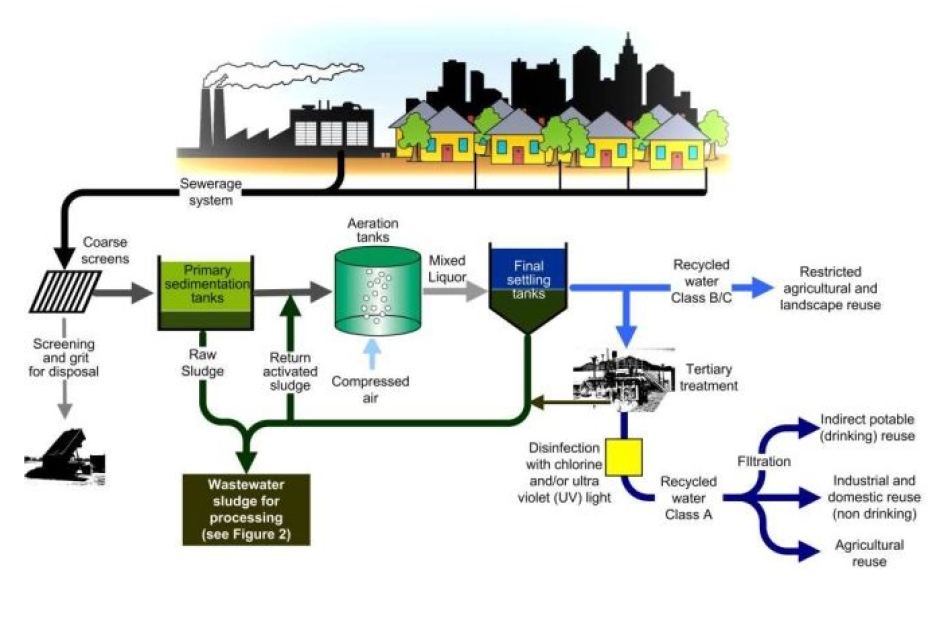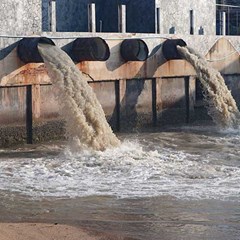Industrial Waste Water Treatment-- Lasting Solutions for Industrial Water Management
Industrial Waste Water Treatment-- Lasting Solutions for Industrial Water Management
Blog Article
Technologies and Developments in Hazardous Waste Water Therapy Technologies
The landscape of industrial wastewater therapy is undergoing a transformative shift, driven by innovations that boost both performance and sustainability. Emerging modern technologies, such as membrane layer bioreactors and microbial gas cells, are redefining contaminant elimination procedures while adding to power generation. Furthermore, resource recuperation techniques are getting traction, lining up with circular economy concepts. As governing requirements progress, the integration of AI and artificial intelligence right into wastewater management systems promises to make certain and simplify operations compliance. Nevertheless, the complete implications of these advancements elevate important questions concerning their scalability and long-lasting effect on industry practices.
Introduction of Waste Water Treatment Technologies
Wastewater therapy technologies include a variety of approaches created to eliminate pollutants from industrial effluents prior to their launch into the environment. These modern technologies are vital for maintaining eco-friendly balance and making sure conformity with ecological regulations. The key categories of wastewater treatment include physical, chemical, and organic techniques, each offering distinct objectives based on the nature of the pollutants existing.

Biological treatment methods employ microorganisms to degrade raw material, making them especially reliable for organic-rich effluents. Methods like turned on sludge and biofilm activators harness the all-natural degradation capacities of germs, resulting in substantial reductions in biochemical oxygen demand (BOD)
Advanced Filtration Techniques
Advanced filtration techniques stand for an important evolution in the world of industrial wastewater therapy, enhancing the efficiency of pollutant elimination procedures. Industrial Waste Water Treatment. These methods incorporate a variety of technologies, including microfiltration, ultrafiltration, nanofiltration, and reverse osmosis, which provide sequential obstacles for numerous bit sizes and chemical frameworks
Microfiltration and ultrafiltration utilize membrane layer systems to eliminate put on hold solids, microorganisms, and bigger organic molecules, enhancing the top quality of effluent prior to additional treatment. Nanofiltration links the void in between ultrafiltration and turn around osmosis, successfully eliminating natural compounds and divalent ions, therefore lowering the tons on downstream processes.
Reverse osmosis provides the highest degree of purification by permitting only water and little particles to go through its semi-permeable membranes, making it optimal for redeeming high-quality water from industrial effluents. Current developments in membrane layer technology, including the growth of even more sturdy and fouling-resistant materials, have substantially improved functional performance and decreased costs.
Integrating these sophisticated filtering techniques not just improves the total treatment process but also adds to sustainability efforts by enabling water reuse and source recovery in commercial setups. (Industrial Waste Water Treatment)
Organic Therapy Advancements

Furthermore, the advancement of crafted biological systems, such as membrane bioreactors (MBRs), incorporates organic treatment with advanced membrane filtering. This combination enables for greater effluent quality and minimized footprint, making it appropriate for space-constrained commercial centers. Developments in genetically crafted microorganisms have actually also emerged, improving the biodegradation of details pollutants, such as drugs and hefty steels, that are traditionally challenging to eliminate.
Furthermore, the execution of bioaugmentation methods, where helpful germs are introduced to improve the existing organic therapy procedures, has shown promising lead to enhancing treatment performance. These developments collectively signify a fad towards more sustainable and effective organic treatment methods that can adapt to the progressing intricacies of commercial article wastewater streams. As sectors continue to focus on environmental conformity, these organic developments will certainly play a critical role in wastewater management.

Source Recuperation Methods
In commercial settings, the combination of resource healing approaches has ended up being significantly vital for enhancing sustainability and reducing waste. These techniques focus on removing valuable materials and power from wastewater streams, thus changing possible contaminants right into reusable resources.
One prominent strategy is nutrition recuperation, where nitrogen and phosphorus, frequently present in excess in from this source wastewater, are captured and transformed into plant foods. This not just minimizes ecological impacts however likewise supplies a round economic situation solution for farming applications. Additionally, technologies such as anaerobic digestion allow for the conversion of natural waste right into biogas, a renewable resource resource that can offset fossil gas use in commercial procedures.
Furthermore, advanced purification and membrane technologies help with the recuperation of industrial spin-offs such as salts and steels. These recovered products can be reintegrated into production processes, decreasing the need for virgin resources.
Future Patterns in Drainage Monitoring
As sectors increasingly prioritize sustainability, the future of wastewater administration is set to undergo substantial changes. Technical improvements, such as expert system and artificial intelligence, will certainly allow more efficient surveillance and administration of wastewater systems. These technologies can predict upkeep requirements, optimize treatment procedures, and enhance decision-making, ultimately lowering operational costs and ecological impact.
Additionally, the integration of circular economic climate concepts will play an essential duty in wastewater monitoring. Industries are anticipated to change towards systems that not just treat that site wastewater however likewise recoup beneficial resources, such as nutrients, water, and energy. This change will certainly reduce waste and advertise the reuse of materials, straightening with global sustainability goals.
Emerging treatment methods, such as membrane bioreactors and advanced oxidation processes, will even more improve the effectiveness of wastewater treatment, enabling for better effluents appropriate for reuse. Furthermore, regulative frameworks are likely to develop, emphasizing stricter criteria for wastewater discharge and motivating sectors to take on ingenious therapy services.
Conclusion
In conclusion, the advancement of industrial wastewater treatment technologies shows a considerable shift towards enhanced effectiveness and sustainability (Industrial Waste Water Treatment). Technologies in innovative filtration methods, biological treatments, and resource healing methods highlight the market's dedication to environmental stewardship.
The landscape of industrial wastewater treatment is undertaking a transformative change, driven by technologies that boost both effectiveness and sustainability.Wastewater treatment innovations include a range of methods designed to get rid of impurities from industrial effluents before their launch right into the setting.Using the power of organic procedures has actually led to considerable innovations in the therapy of commercial wastewater.Furthermore, the application of bioaugmentation methods, where beneficial microbes are introduced to enhance the existing biological therapy processes, has shown encouraging results in improving therapy efficiency. These developments collectively indicate a trend in the direction of more sustainable and reliable organic therapy approaches that can adjust to the progressing complexities of commercial wastewater streams.
Report this page